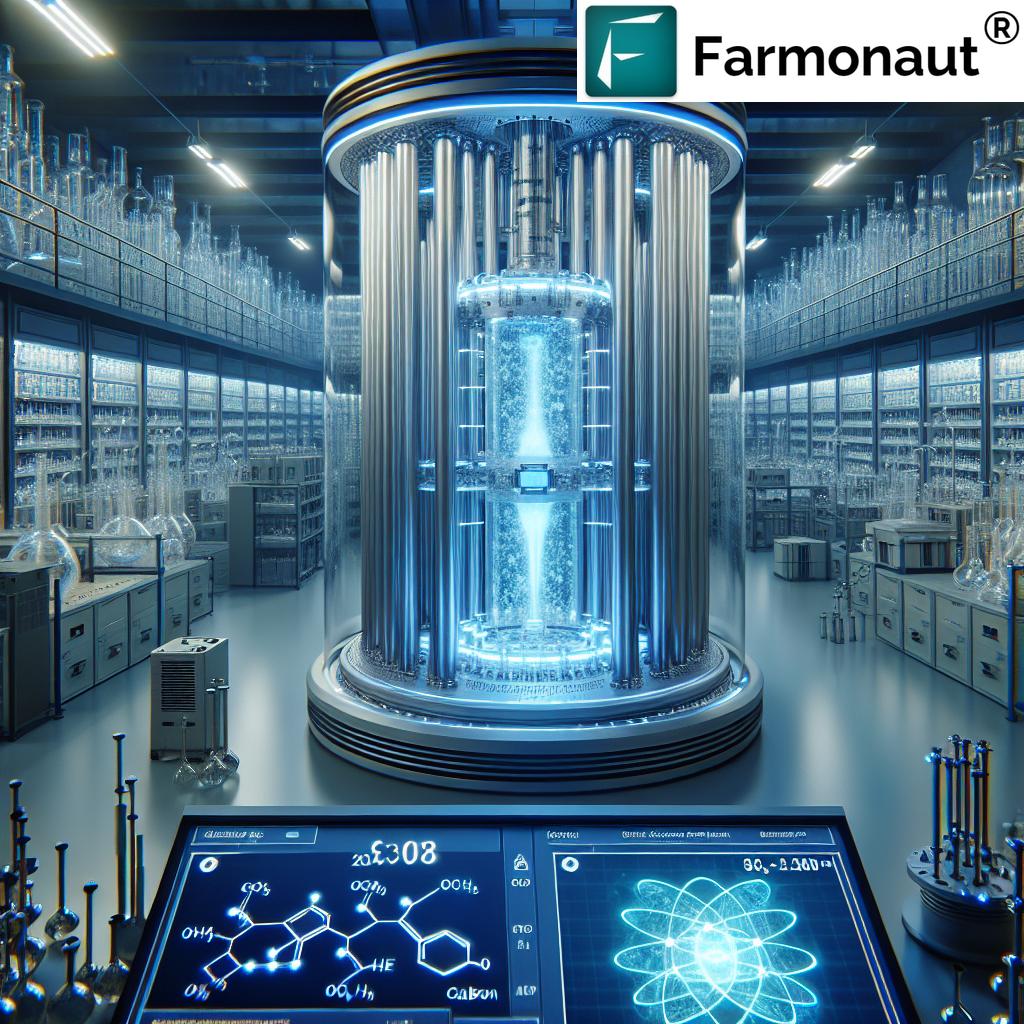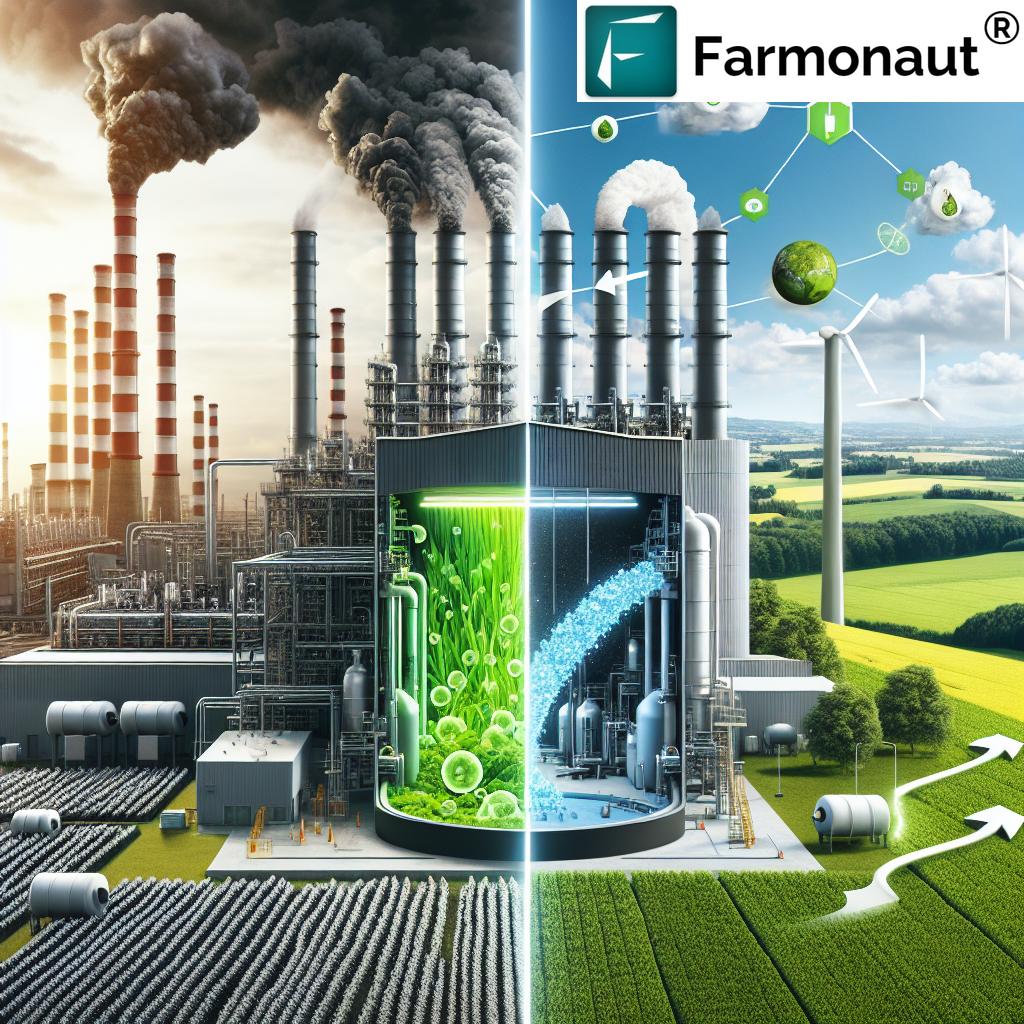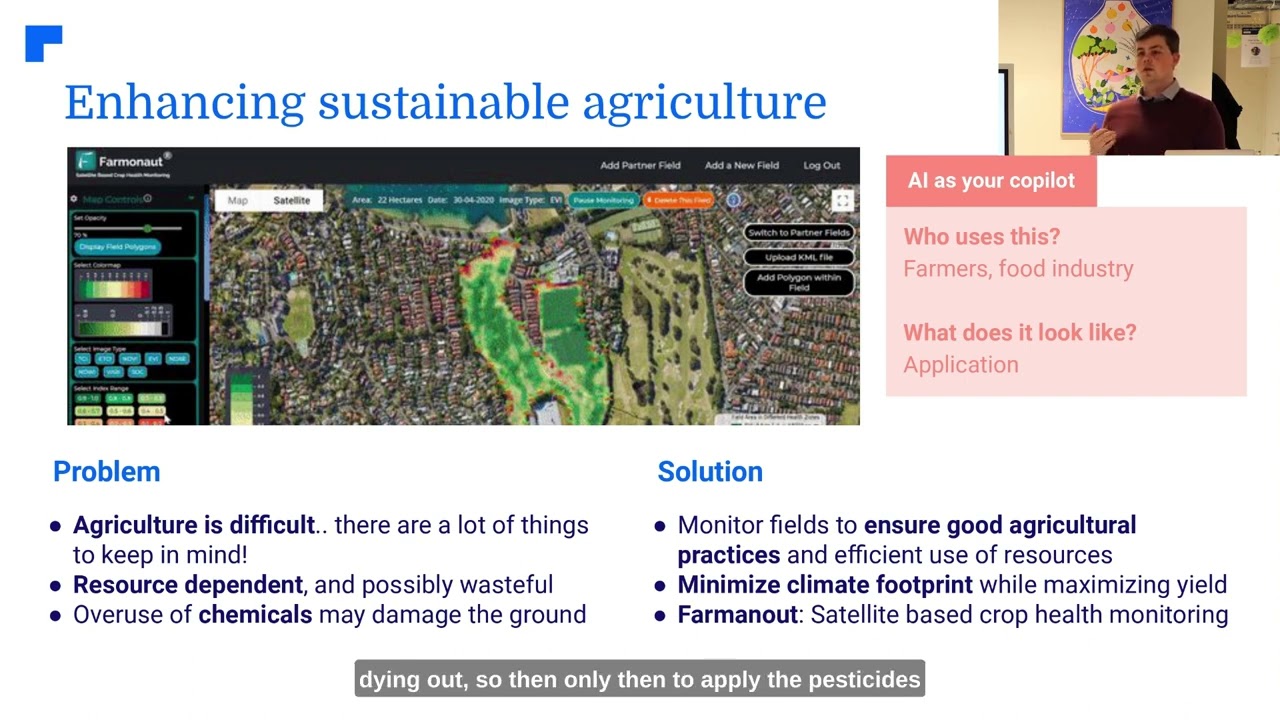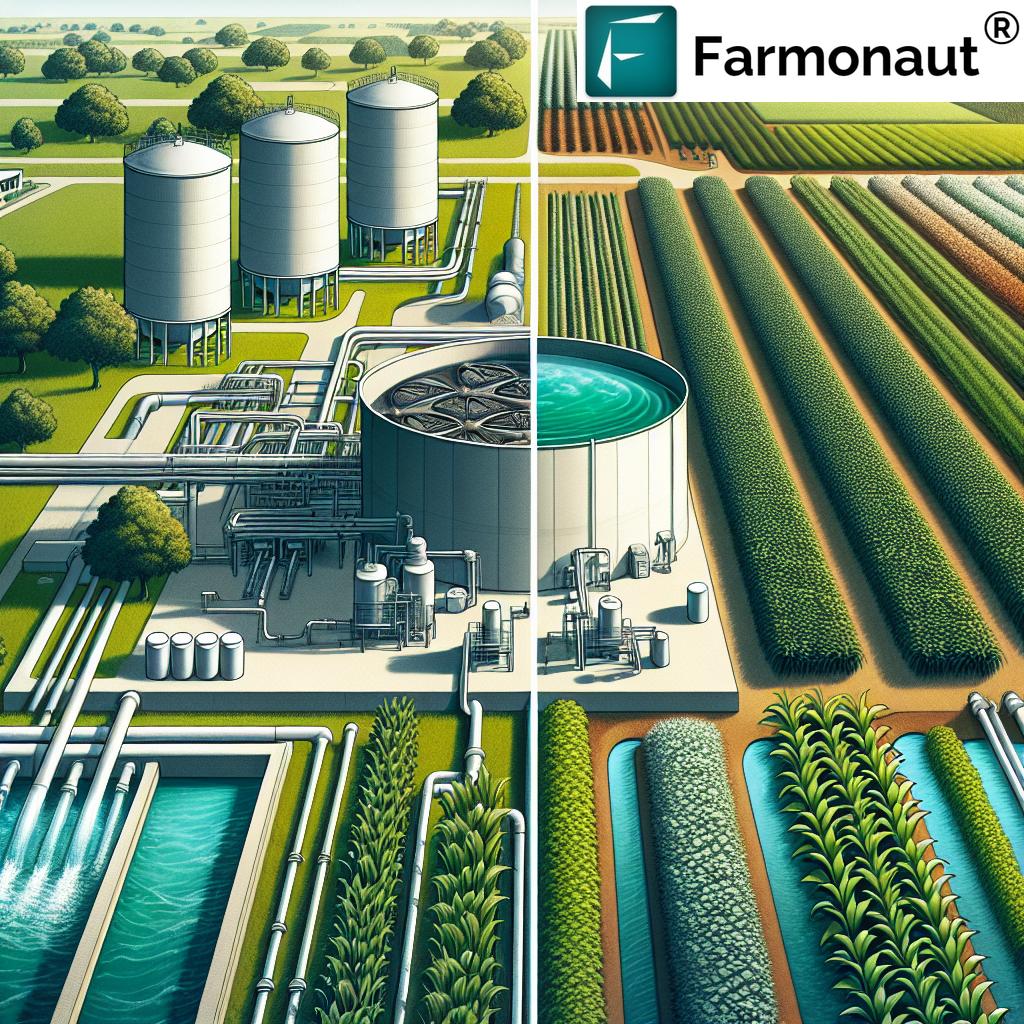Revolutionizing Green Ammonia: Buffalo University’s Breakthrough in Sustainable Fertilizer Production
“Buffalo University’s plasma electrochemical reactor converts air to ammonia in just two steps, mimicking nature’s processes.”
In the realm of sustainable agriculture and chemical engineering, we are witnessing a groundbreaking revolution that promises to reshape the future of fertilizer production. At the heart of this transformation is an innovative approach to green ammonia synthesis, developed by researchers at Buffalo University. This cutting-edge technology not only addresses the pressing need for more sustainable farming practices but also offers a beacon of hope in our global efforts to combat climate change and ensure food security for generations to come.
In this comprehensive exploration, we’ll delve into the intricacies of this revolutionary breakthrough, examining its potential impact on the agricultural industry, environmental sustainability, and the global nitrogen cycle. We’ll also compare this new method to traditional ammonia production techniques and discuss the implications for farmers, researchers, and policymakers worldwide.
Understanding the Breakthrough: Buffalo University’s Plasma Electrochemical Reactor
At the core of this groundbreaking research is a pioneering plasma electrochemical reactor developed by scientists at Buffalo University. This innovative device has the remarkable ability to convert air into ammonia without producing any carbon footprint, effectively mimicking nature’s own processes in the nitrogen cycle.
The reactor’s design is elegantly simple yet profoundly effective, consisting of two primary steps:
- Plasma Simulation: The first stage of the process utilizes plasma to simulate lightning, breaking apart nitrogen molecules in the atmosphere.
- Catalytic Conversion: In the second stage, a copper-palladium catalyst replicates the action of soil bacteria, efficiently converting the nitrogen fragments and water into ammonia.
This innovative chemical process offers a carbon-free alternative to the energy-intensive Haber-Bosch method, which has been the industry standard for ammonia production for over a century. The potential of this eco-friendly ammonia production technology to significantly reduce the industry’s reliance on fossil fuels and energy consumption cannot be overstated.

The Science Behind Green Ammonia Synthesis
To fully appreciate the significance of this breakthrough, it’s essential to understand the science behind green ammonia synthesis and its role in the nitrogen cycle in chemistry. Ammonia (NH3) is a crucial compound in agriculture, serving as the basis for most synthetic fertilizers. Traditionally, its production has been energy-intensive and heavily reliant on fossil fuels.
The Buffalo University team’s approach to sustainable fertilizer production leverages fundamental principles of physics and chemistry to create a more efficient and environmentally friendly process. By harnessing the power of plasma and catalytic reactions, they’ve developed a method that closely mimics natural nitrogen fixation processes.
Key Components of the Plasma Electrochemical Reactor
- Plasma Generator: This component creates a high-energy environment similar to lightning, breaking the strong triple bond of atmospheric nitrogen (N2).
- Copper-Palladium Catalyst: This specially designed catalyst facilitates the conversion of nitrogen oxides and water into ammonia, mimicking the action of nitrogen-fixing bacteria in soil.
- Electrochemical Cell: This element of the reactor enables the efficient transfer of electrons necessary for the reduction of nitrogen to ammonia.
The synergy between these components results in a highly efficient air to ammonia conversion process that operates at ambient temperatures and pressures, significantly reducing energy requirements compared to traditional methods.
Comparing Green Ammonia Synthesis to Traditional Methods
To fully grasp the revolutionary nature of this new technology, it’s crucial to compare it with the long-standing Haber-Bosch process. The following table provides a side-by-side comparison of these two ammonia production methods:
| Production Method | Energy Source | Carbon Footprint (estimated CO2 emissions per ton of ammonia) | Raw Materials | Efficiency (estimated ammonia yield percentage) | Scalability Potential | Environmental Impact |
|---|---|---|---|---|---|---|
| Buffalo University’s Plasma Electrochemical Reactor | Electricity (potentially from renewable sources) | Near-zero | Air and water | High (exact percentage under research) | Promising, currently in scaling-up phase | Minimal, potential for carbon-neutral production |
| Haber-Bosch Process | Primarily fossil fuels | 1.5 – 3 tons | Natural gas, air, water | 40-50% | Highly scalable, currently dominant | Significant, accounts for ~1-2% of global CO2 emissions |
As we can see from this comparison, the innovative chemical processes developed at Buffalo University offer significant advantages in terms of environmental impact and raw material requirements. The potential for carbon-free ammonia synthesis using this new technology could revolutionize the fertilizer industry and contribute significantly to global sustainability efforts.
Implications for Sustainable Agriculture and Food Security
The development of this eco-friendly ammonia production technology has far-reaching implications for sustainable agriculture and global food security. By providing a carbon-free alternative to traditional fertilizer production methods, this breakthrough could help address some of the most pressing challenges facing modern farming:
- Reduced Environmental Impact: By eliminating the need for fossil fuels in ammonia production, this technology could significantly reduce the carbon footprint of the agricultural sector.
- Improved Energy Efficiency: The plasma electrochemical reactor’s ability to operate at ambient conditions could lead to substantial energy savings in fertilizer production.
- Localized Production: The simplicity and scalability of this technology could enable more localized ammonia production, reducing transportation costs and emissions.
- Enhanced Food Security: More sustainable and potentially less expensive fertilizer production could improve access to essential nutrients for farmers worldwide, contributing to increased crop yields and food security.
“The new green ammonia synthesis could potentially reduce the fertilizer industry’s energy consumption by up to 90%.”

The Role of Green Ammonia in the Future of Energy
Beyond its applications in agriculture, green ammonia holds immense potential as a sustainable energy carrier. As we transition towards a carbon-neutral future, the ability to produce ammonia without relying on fossil fuels opens up exciting possibilities:
- Fuel for Transportation: Ammonia can be used as a carbon-free fuel for shipping and other heavy transport sectors, offering a viable alternative to diesel and heavy fuel oil.
- Energy Storage: Green ammonia could serve as an efficient medium for storing and transporting renewable energy over long distances.
- Industrial Feedstock: As a key component in many industrial processes, carbon-free ammonia could help decarbonize various sectors beyond agriculture.
The versatility of green ammonia as both a fertilizer and an energy carrier underscores the transformative potential of Buffalo University’s breakthrough in sustainable chemistry.
Challenges and Future Directions
While the development of this plasma electrochemical reactor for green ammonia synthesis represents a significant leap forward, several challenges remain on the path to widespread adoption:
- Scaling Up: Researchers are currently working on scaling up the reactor to industrial levels, which involves overcoming engineering and economic hurdles.
- Cost Competitiveness: For this technology to be widely adopted, it must become cost-competitive with traditional ammonia production methods.
- Infrastructure Adaptation: Transitioning to this new production method will require significant changes to existing industrial infrastructure.
- Regulatory Framework: The development of appropriate regulations and standards for green ammonia production and use will be crucial for its integration into various sectors.
Despite these challenges, the potential benefits of this renewable ammonia technology are driving continued research and development efforts. As we look to the future, several key areas of focus emerge:
- Catalyst Optimization: Further refinement of the copper-palladium catalyst could lead to even higher efficiency and lower costs.
- Integration with Renewable Energy: Exploring ways to power the plasma electrochemical reactor with renewable energy sources could further enhance its sustainability credentials.
- Pilot Projects: Collaborations between universities, industry partners, and government agencies to implement pilot projects will be crucial for demonstrating the technology’s viability at scale.
The Global Impact of Green Ammonia Technology
The development of this innovative chemical process for green ammonia synthesis has implications that extend far beyond the United States and Canada. As a global challenge, sustainable fertilizer production has the potential to transform agriculture and energy systems worldwide:
- Developing Nations: Access to affordable, sustainable fertilizers could significantly boost agricultural productivity in regions struggling with food security.
- Climate Change Mitigation: By reducing the carbon footprint of ammonia production, this technology could contribute to global efforts to combat climate change.
- Energy Independence: Countries without access to natural gas reserves could produce their own ammonia using renewable energy sources, reducing dependence on imports.
- Scientific Collaboration: This breakthrough could spark further international collaboration in the fields of chemistry, physics, and sustainable technology.
As researchers continue to refine and scale up this technology, its potential to reshape global agriculture and energy systems becomes increasingly clear. The journey from laboratory breakthrough to industrial application is often long and challenging, but the promise of a more sustainable future makes this an endeavor worth pursuing.
The Role of Education and Research in Advancing Green Chemistry
The breakthrough in green ammonia synthesis at Buffalo University underscores the critical importance of continued investment in scientific research and education. As we face global challenges like climate change and food security, the role of universities in driving innovation becomes ever more crucial.
Key aspects of this educational and research ecosystem include:
- Interdisciplinary Collaboration: The success of this project demonstrates the power of combining expertise from various fields, including chemistry, physics, and engineering.
- Industry Partnerships: Collaborations between academia and industry partners are essential for translating laboratory discoveries into real-world applications.
- STEM Education: Inspiring and educating the next generation of scientists and engineers is crucial for continuing the momentum of sustainable innovation.
- Research Funding: Adequate funding for basic and applied research in green chemistry and sustainable technologies is vital for future breakthroughs.
By fostering an environment that supports cutting-edge research and education in sustainable science and technology, we can accelerate the development of solutions to some of our most pressing global challenges.
The Future of Farming: Integrating Green Ammonia with Precision Agriculture
As we look towards a future where green ammonia becomes a reality in agricultural production, it’s important to consider how this technology can be integrated with other advanced farming practices. Precision agriculture, which leverages data and technology to optimize crop yields and resource use, presents an exciting opportunity for synergy with sustainable fertilizer production.
Here’s where innovative platforms like Farmonaut come into play. Farmonaut is at the forefront of agricultural technology, offering advanced satellite-based farm management solutions that could complement the use of green ammonia in several ways:
- Optimized Fertilizer Application: Farmonaut’s crop health monitoring capabilities could help farmers determine the precise amount and timing of green ammonia-based fertilizer application, maximizing efficiency and minimizing waste.
- Environmental Impact Tracking: The platform’s ability to monitor various environmental factors could be used to assess the long-term impacts of switching to green ammonia fertilizers on soil health and crop productivity.
- Supply Chain Integration: Farmonaut’s blockchain-based traceability solutions could potentially be extended to track the production and distribution of green ammonia, ensuring transparency and sustainability throughout the fertilizer supply chain.
By combining green ammonia technology with precision agriculture tools like Farmonaut, we can envision a future where farming is not only more sustainable but also more efficient and productive.
Economic Implications of Green Ammonia Technology
The potential shift towards green ammonia production could have significant economic implications for various sectors:
- Fertilizer Industry: While initial investments in new technology may be substantial, long-term savings on energy costs and potential carbon taxes could make green ammonia economically competitive.
- Energy Sector: The development of green ammonia as an energy carrier could create new markets and job opportunities in renewable energy and sustainable chemistry.
- Agriculture: More stable and potentially lower fertilizer prices could improve profit margins for farmers and contribute to more affordable food prices for consumers.
- Technology and Innovation: The growth of green ammonia technology could spur further innovations in related fields, driving economic growth in the clean technology sector.
As with any transformative technology, the economic impacts of green ammonia will likely be far-reaching and complex, requiring careful analysis and adaptive policies to maximize benefits and mitigate potential disruptions.
Policy Implications and Regulatory Considerations
The development and adoption of green ammonia technology will require supportive policy frameworks and regulatory environments. Key considerations include:
- Research Funding: Continued government support for research and development in sustainable chemistry and green ammonia production will be crucial.
- Carbon Pricing: Implementing or strengthening carbon pricing mechanisms could make green ammonia more economically competitive compared to traditional production methods.
- Incentives for Adoption: Policies that incentivize the adoption of green ammonia technology in agriculture and other industries could accelerate its uptake.
- Safety Standards: Developing and enforcing appropriate safety standards for the production, storage, and use of green ammonia will be essential.
- International Cooperation: Given the global nature of climate change and food security challenges, international cooperation in developing and sharing green ammonia technology will be important.
Policymakers will need to work closely with scientists, industry leaders, and other stakeholders to create a regulatory environment that fosters innovation while ensuring safety and environmental protection.
Frequently Asked Questions (FAQ)
- What is green ammonia?
Green ammonia refers to ammonia produced using renewable energy sources and sustainable methods, resulting in little to no carbon emissions. It’s a more environmentally friendly alternative to traditional ammonia production. - How does Buffalo University’s plasma electrochemical reactor work?
The reactor uses a two-step process: first, it employs plasma to break apart nitrogen molecules in the air, simulating lightning. Then, a copper-palladium catalyst converts these nitrogen fragments and water into ammonia, mimicking the action of soil bacteria. - What are the main advantages of this new green ammonia synthesis method?
The key advantages include zero carbon footprint, use of abundant raw materials (air and water), potential for integration with renewable energy sources, and operation at ambient temperatures and pressures. - How does this technology compare to the traditional Haber-Bosch process?
Unlike the Haber-Bosch process, which relies on high temperatures, high pressures, and fossil fuels, this new method operates at ambient conditions and can potentially use renewable energy, significantly reducing energy consumption and carbon emissions. - What are the potential applications of green ammonia beyond fertilizers?
Green ammonia has potential applications as a carbon-free fuel for shipping, a medium for energy storage and transport, and as a feedstock for various industrial processes.
Conclusion: A Green Revolution in Chemistry
The breakthrough in green ammonia synthesis at Buffalo University represents a pivotal moment in the fields of sustainable chemistry and agriculture. By offering a carbon-free alternative to the energy-intensive Haber-Bosch process, this innovative technology has the potential to revolutionize fertilizer production and contribute significantly to global efforts in combating climate change and ensuring food security.
As researchers continue to refine and scale up this technology, collaboration between academia, industry, and government will be crucial. The integration of green ammonia production with precision agriculture tools like Farmonaut could further enhance the sustainability and efficiency of farming practices worldwide.
While challenges remain in scaling up and implementing this technology on an industrial scale, the potential benefits for our environment, economy, and global food systems are immense. As we look to the future, the development of green ammonia synthesis stands as a shining example of how innovative scientific research can pave the way for a more sustainable and prosperous world.
The journey towards widespread adoption of this technology may be long, but each step brings us closer to a future where agriculture and industry can thrive without compromising our planet’s health. As we continue to push the boundaries of sustainable chemistry, we open up new possibilities for addressing some of the most pressing challenges of our time.
Take Action: Join the Green Agriculture Revolution
As we’ve explored the groundbreaking potential of green ammonia synthesis, it’s clear that the future of agriculture is moving towards more sustainable and technologically advanced practices. While the large-scale implementation of green ammonia technology is still in development, there are steps that farmers, agriculturists, and even home gardeners can take today to embrace more sustainable practices.
One such step is leveraging cutting-edge agricultural technology like Farmonaut. By utilizing satellite-based crop monitoring and AI-driven insights, you can optimize your resource use, improve crop yields, and reduce environmental impact – all key goals that align with the promise of green ammonia technology.
Ready to take your farming practices to the next level? Explore Farmonaut’s range of solutions:
- Web App: Access powerful farm management tools from your browser.
- Android App: Monitor your farm on-the-go with our mobile application.
- iOS App: Apple users can also benefit from our advanced farming insights.
- API Access: Integrate Farmonaut’s data into your existing systems for seamless farm management.
Start your journey towards more sustainable and efficient farming today with Farmonaut!



Earn With Farmonaut: Join our Affiliate Program
Earn 20% recurring commission with Farmonaut’s affiliate program by sharing your promo code and helping farmers save 10%. Onboard 10 Elite farmers monthly to earn a minimum of $148,000 annually—start now and grow your income!
Subscribe to Farmonaut
By embracing innovative technologies and sustainable practices, we can all contribute to a greener, more productive future for agriculture. Whether you’re a large-scale farmer, a small-holding owner, or simply passionate about sustainable food production, there’s a role for you to play in this exciting agricultural revolution.














